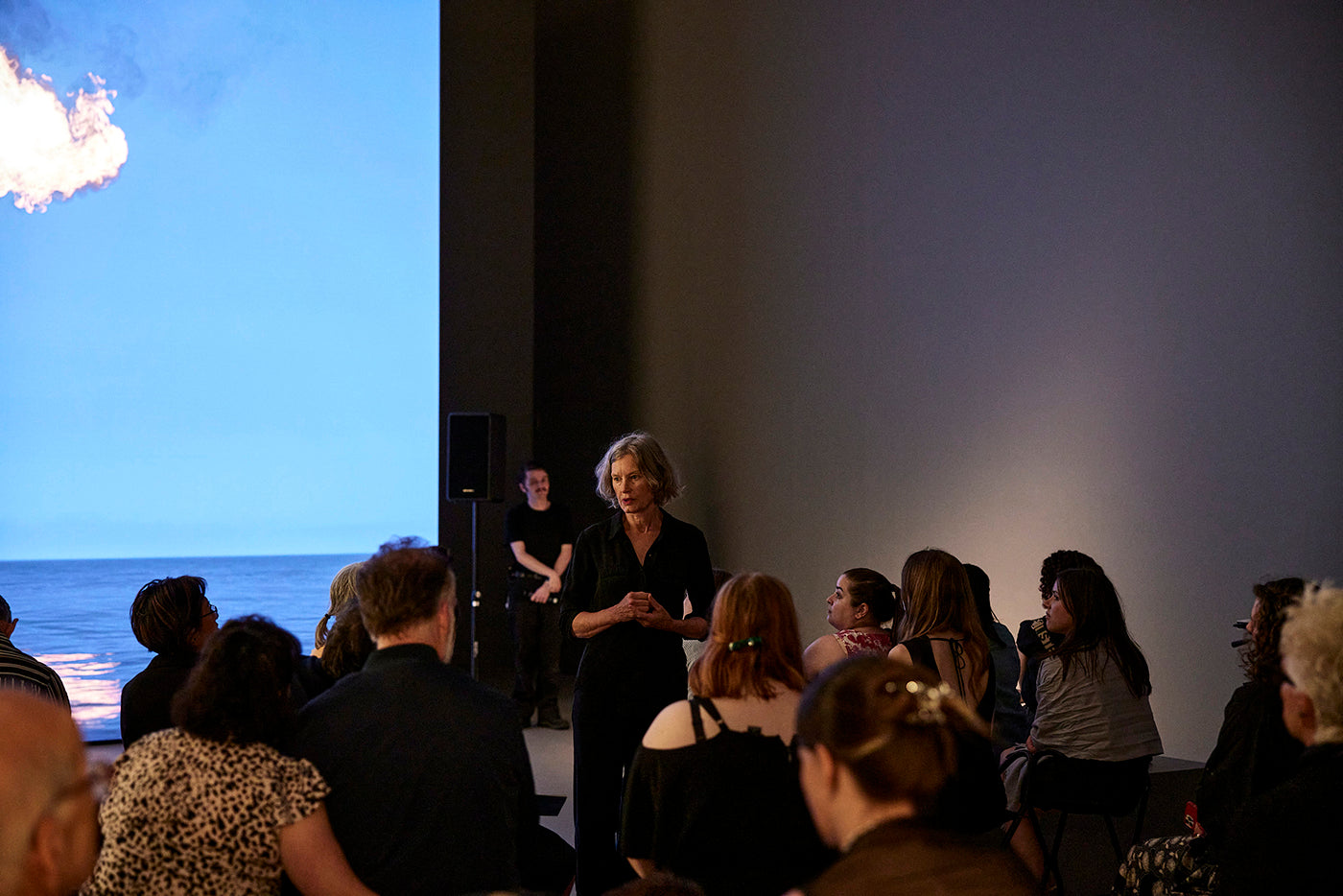Inside the darkened gallery, the talk now concluded, Crisp introduces herself to the audience. On the wall, thanks to a tiny projector mounted on a tripod, beams a “DIRt” (“Dance In Regional disasTer zones”) excerpt, filmed by Andrew Morrish. Crisp now stands alongside Crisp projected, walking through the blackened, incinerated heathland of what was bandicoot and potoroo habitat in Cape Conran, East Gippsland, after a so-called controlled back-burn. The line between Crisp’s own introduction to the work and the dance that unfolds in response, or is that extension, is indistinguishable as her words become small, selected movements plucked from the earth, and felt within.[1] With her left hand raised above her head, Crisp pats repeatedly at the space before her with her right, and I think of how the earth must feel beneath the hopping spring of a potoroo after a fire has scorched their habitat. As Crisp draws her left leg upwards, her left arm mirrors the action, and the space between the two limbs remains at equal distance to the other. With her hand upon her forehead, she gently guides her head backwards and the gallery spotlight reads like the sun that she unfurls and warms before, ever attuned to something beyond, something past, something coming. Not always within view, these glimpses of Crisp alongside the gallery wall that serves more as a passageway between gallery spaces feel tender and powerful, as Crisp extinguishes John Gerrard’s continuously burning gas flare video, Flare (Oceania), on the wall opposite.
Returning for the second performance ten minutes later, Crisp begins the work from the middle of the gallery, in amongst the audience, enshrouded in the space. Now she is a silhouette and the same performance is a new performance. The suggestion of a nocturnal bandicoot digging with their front feet appears momentarily. The tripod, too, has relocated and rests in the “snout pokes” of a bandicoot for stability, allowing Cape Conran to materialise on the other side of the gallery. Looking at the projection, it is as if the trees roots extend down the gallery walls and have felt their way in the soil of the gallery floor to where Crisp is nestled in order to help her anchor herself and aerate the soil. A sense of time alters as if in answer to how long does the soil biome take to regenerate after fire, decades, as Crisp raises both arms bent at the elbow, in a performance of a handful of minutes. As Crisp digs into and disperses, this is slowing down to notice the little things that we often miss.









comments